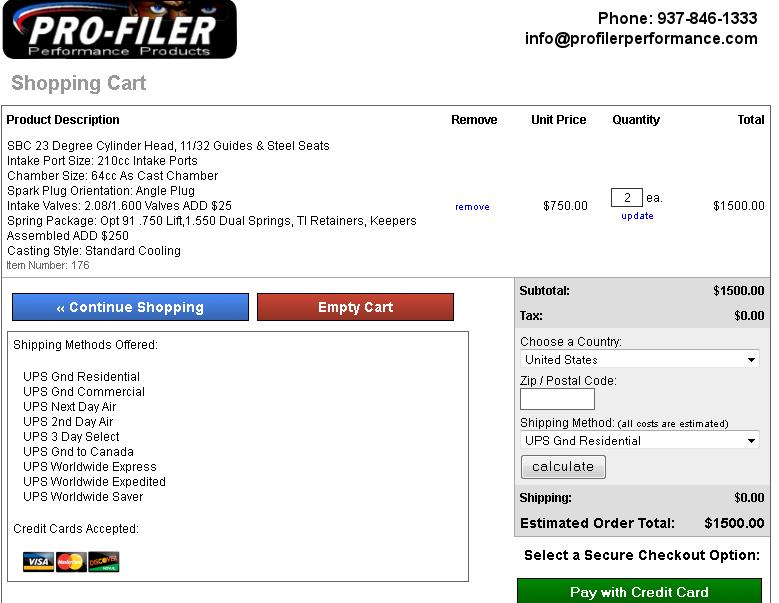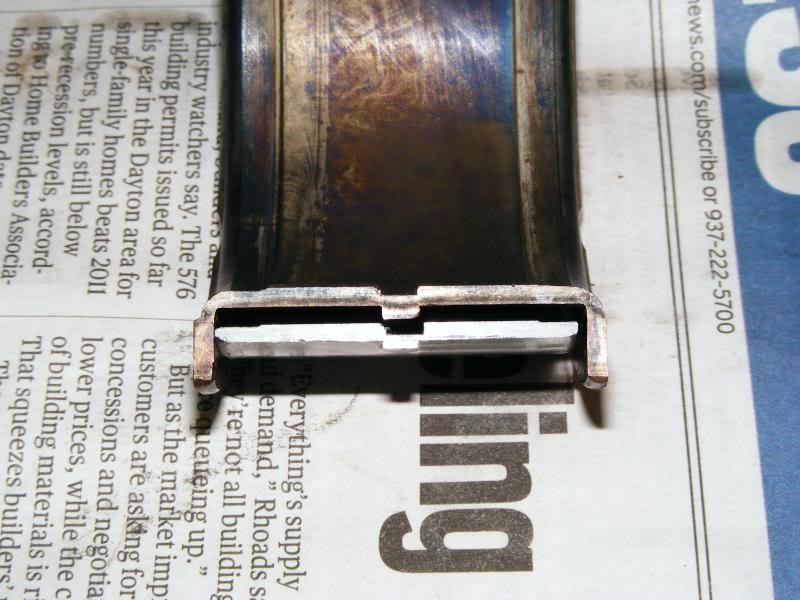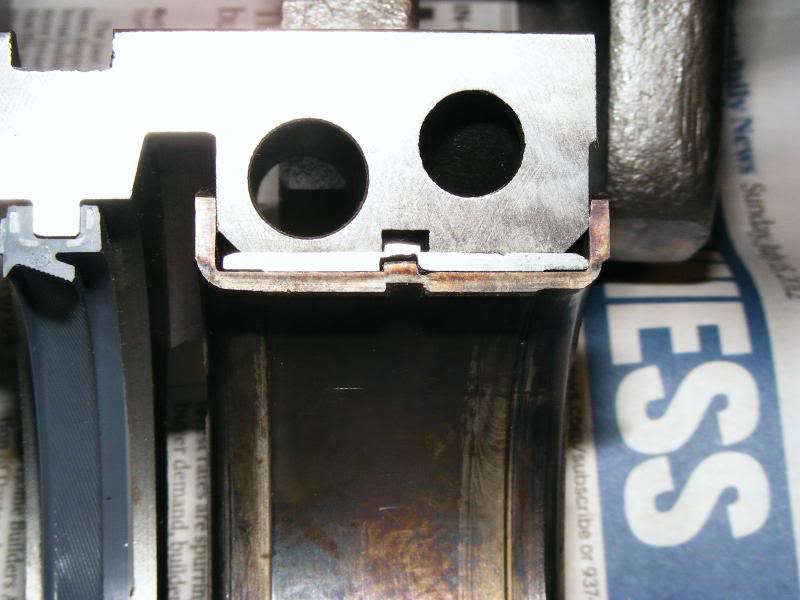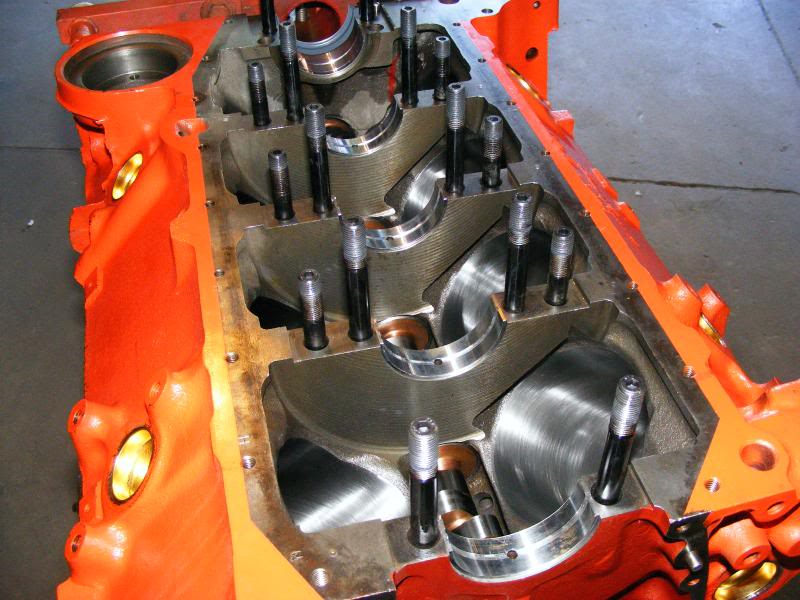"GRUMPY,I want to spin a sbc to 8000rpm, and make good hp in a really light weight car for drag racing, what will I need"
The first thing ID suggest is stepping, back and asking yourself why you want the sbc engine to spin 8000rpm, simply because controlling a valve train at those rpms is going to require a great deal of rather expensive parts, and its going to significantly reduce your potential durability. you don,t need to spin an engine any more that lets say 6500rpm to make very impressive power PROVIDED the components used and the displacement are carefully selected and matched and if your 100% set on spinning the engine that fast, you might be much better off buying a used NASCAR race engine, before investing a ton of cash in this project.
the key to making BOTH power and having some hope of durability is in keeping piston speeds under 4500 feet per minute and maintaining valve train control while allowing the heads to flow at least about 280-300cfm , the newer heads like the 18 degree or better yet SB2 are what you need.
read this link
http://www.trickflow.com/articles/18degree_hp/
http://garage.grumpysperformance.co...sbc-vs-383-sbc-dyno-results.10210/#post-52519
heres a source and info on used sb2 nascar engines
http://www.roushyatesparts.com/used-rac ... -s/532.htm
http://www.eatmonraceparts.com/products ... 818HP.html
http://www.race-cars.com/engsales/chevy ... 3673ss.htm
http://www.derrikecope.com/wcup/98/sb2.htm
http://blogs.popularhotrodding.com/6269 ... r-engines/
viewtopic.php?f=44&t=3733&p=12992&hilit=+chevy+weight+displacement#p12992
viewtopic.php?f=50&t=46
now asuming you want to build a rather traditional 23 degree sbc, youll need a light weight 4340 forged crank preferably with a 3" stroke and 6.00" rods forged pistons, that give you about 13:1 compression and a 400 STYLE AFTERMARKET block with a 4.125" bore with 4 bolt main caps , youll have a 321 displacement, but the shorter stroke and larger bore will keep the piston speed under 4500 fpm which is about max you can hope to have and maintain durability.
youll need shaft rockers, about 13:1 compression, a carb that flows at least 850cfm and tunned headers
heads

DON,T FORGET SHAFT ROCKERS ARE A BETTER OPTION THAN STANDARD ROLLER ROCKERS
intake
http://www.summitracing.com/parts/edl-2892
block
http://www.summitracing.com/search?keyw ... 1212&dds=1
rods
http://www.summitracing.com/parts/hrs-b ... /chevrolet
A roller cam similar to this
http://www.cranecams.com/product/cart.p ... il&p=24584
OR THIS
http://www.lunatipower.com/Product.aspx?id=1995
youll want a 3.0" stroke forged crank and a DART block, but that will in some cases require bearing spacers as the dart block has the larger crank journal size


and main cap studs

PERSONALLY the used NASCAR SB2 engines a much better deal
ID also point out the FACT that when the Z28 camaros came out they were considered fast cars with high rpm 302 displacement engines, but it soon became obvious that a similar camaro with a 383-406 sbc engine would leave them watching tail lights every time. remember the only reason they had 302 engines was the racing class they were designed to race in required a max displacement of 5 liters or about 305 cubic inches
viewtopic.php?f=87&t=8379&p=29224&hilit=crossram#p29224
viewtopic.php?f=69&t=7804
viewtopic.php?f=50&t=428
viewtopic.php?f=44&t=38
viewtopic.php?f=69&t=519
viewtopic.php?f=69&t=3814
The first thing ID suggest is stepping, back and asking yourself why you want the sbc engine to spin 8000rpm, simply because controlling a valve train at those rpms is going to require a great deal of rather expensive parts, and its going to significantly reduce your potential durability. you don,t need to spin an engine any more that lets say 6500rpm to make very impressive power PROVIDED the components used and the displacement are carefully selected and matched and if your 100% set on spinning the engine that fast, you might be much better off buying a used NASCAR race engine, before investing a ton of cash in this project.
the key to making BOTH power and having some hope of durability is in keeping piston speeds under 4500 feet per minute and maintaining valve train control while allowing the heads to flow at least about 280-300cfm , the newer heads like the 18 degree or better yet SB2 are what you need.
read this link
http://www.trickflow.com/articles/18degree_hp/
http://garage.grumpysperformance.co...sbc-vs-383-sbc-dyno-results.10210/#post-52519
heres a source and info on used sb2 nascar engines
http://www.roushyatesparts.com/used-rac ... -s/532.htm
http://www.eatmonraceparts.com/products ... 818HP.html
http://www.race-cars.com/engsales/chevy ... 3673ss.htm
http://www.derrikecope.com/wcup/98/sb2.htm
http://blogs.popularhotrodding.com/6269 ... r-engines/
viewtopic.php?f=44&t=3733&p=12992&hilit=+chevy+weight+displacement#p12992
viewtopic.php?f=50&t=46
now asuming you want to build a rather traditional 23 degree sbc, youll need a light weight 4340 forged crank preferably with a 3" stroke and 6.00" rods forged pistons, that give you about 13:1 compression and a 400 STYLE AFTERMARKET block with a 4.125" bore with 4 bolt main caps , youll have a 321 displacement, but the shorter stroke and larger bore will keep the piston speed under 4500 fpm which is about max you can hope to have and maintain durability.
youll need shaft rockers, about 13:1 compression, a carb that flows at least 850cfm and tunned headers
heads

DON,T FORGET SHAFT ROCKERS ARE A BETTER OPTION THAN STANDARD ROLLER ROCKERS
intake
http://www.summitracing.com/parts/edl-2892
block
http://www.summitracing.com/search?keyw ... 1212&dds=1
rods
http://www.summitracing.com/parts/hrs-b ... /chevrolet
A roller cam similar to this
http://www.cranecams.com/product/cart.p ... il&p=24584
OR THIS
http://www.lunatipower.com/Product.aspx?id=1995
youll want a 3.0" stroke forged crank and a DART block, but that will in some cases require bearing spacers as the dart block has the larger crank journal size


and main cap studs

PERSONALLY the used NASCAR SB2 engines a much better deal
ID also point out the FACT that when the Z28 camaros came out they were considered fast cars with high rpm 302 displacement engines, but it soon became obvious that a similar camaro with a 383-406 sbc engine would leave them watching tail lights every time. remember the only reason they had 302 engines was the racing class they were designed to race in required a max displacement of 5 liters or about 305 cubic inches
viewtopic.php?f=87&t=8379&p=29224&hilit=crossram#p29224
viewtopic.php?f=69&t=7804
viewtopic.php?f=50&t=428
viewtopic.php?f=44&t=38
viewtopic.php?f=69&t=519
viewtopic.php?f=69&t=3814
Last edited by a moderator:


















